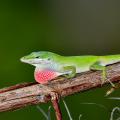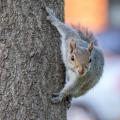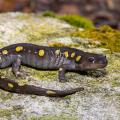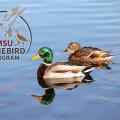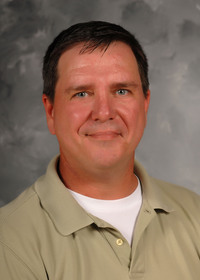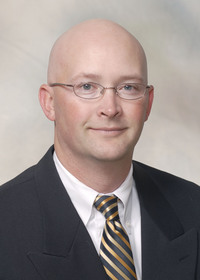Habitat Management
Wildlife species require suitable or healthy habitats to help maintain or increase population numbers. Habitats provide the food, cover, space, and water needs of different animals. Management of native vegetative species, from forbs (weeds) to mature trees, will impact habitat quality to a much greater extent than will any foodplanting or supplemental efforts. Also, for many wildlife species, habitat management must be incorporated with proper protection and harvest management.
Management Tools
Soil quality determines wildlife habitat and population potential. Soil disturbances, such as timber harvest, disking, mowing, and prescribed burning, can improve wildlife habitat, and, if done correctly, can reduce the need for food plantings. However, to maximize vegetative habitat diversity and to help in wildlife harvest and viewing, you might want a mixture of both.
Disking can prepare seedbeds for planting and change the natural composition of plants by removing thicker, undesirable grasses and creating space for more desirable legumes and seed producers. Disking also increases insect production. The best method of disking is "strip disking." This technique works best with fields (pastures or agricultural) and rights-of-way but may also be used in stands of open timber. The key is to disk strips that are 30 to 50 feet wide to leave similarly undisked strips in between them. Do this alternately across the length of the field or area. You should disk strips every 3 years or so for quail.
Strip disking is excellent for providing nesting and broodrearing habitat, insect production, and important seed (food) production for quail and turkeys. As an example, blackberries, an important food to deer, turkeys, and quail, grow on an average 3-year rotation and can be promoted on a 3-year disking schedule. Aquatic plants (e.g., maidencane and smartweed), which are important duck foods at certain times, can be encouraged by spring and summer disking in drawndown ponds or marshy areas. Legumes (e.g., partridge pea, beggarweed, vetches), forbs (e.g., croton, ragweed), and large seeded grasses can be encouraged with winter-to-spring disking of fields and plots. Always disk on the contour to prevent or to minimize soil erosion.
Mowing is used primarily for the bobwhite quail and wild turkey. Late-winter (February) and late-summer (August) mowing of grasses attracts insects that are critical in the diets of juvenile birds. Late-summer mowing of grassy plots and fallow fields can increase nutrient availability of plants by providing fresh, green growth. The highest nutrient availability in grasses is in the first 8 inches of growth. Mowing can also help provide browse for deer.
Prescribed burning is the "skillful application of fire to natural fuels, under conditions that allow confinement and obtain planned benefits to forest or wildlife management efforts." Prescribed burning often is the most economical and beneficial tool used in wildlife management. It is also a controversial issue in forest and wildlife management due to potential for landowner liability and smoke management health concerns. Prescribed burning is often used in pine or upland mixed pine hardwood stands to reduce dry fuel hazards, to control hardwood competition, and to prepare sites for replanting of trees. In addition to those timber management benefits, wildlife benefits encouraged through prescribed burning include ground exposure, seed scarification, legume dispersal, hardwood butt sprouts, and the growth of nutrient-rich forbs, vines, and browse. Prescribed burning should be conducted by responsible, trained, experienced persons only! Report all unattended fires to state forestry personnel.
Publications
News
Little green climbing machine —the Carolina anole, known as Anolis carolinensis, is often called the American chameleon for its ability to change color.
Have you ever been on a walk in the woods, park, or backyard and noticed animal tracks in the mud or dirt?
The yellow-spotted salamander is a slippery, shiny Mississippi amphibian. Also known as Ambystoma maculatum, this is a large amphibian, measuring between six to nine inches!
Success Stories
These are just a few of Mississippi’s gamebirds, and the Mississippi State University Extension Service recently launched a new social media space to support gamebird recreation and management.
In late February, Mississippi State University hosted the 2024 National Floriculture Forum, an annual conference held at different locations around the country.
A Smithsonian Institution exhibit about rural communities continues its journey in public libraries across Mississippi.


